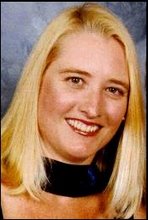Let’s face facts. You don’t have to be a great actor to be a great presenter, but you do have to know something about the tools of the presentational trade. To be an actor, you need to have about fifty or sixty tools in your presentational toolbox, and you have to know how to use them in a whole range of venues, which may take years to master. To be a good presenter, however, you only need to know about ten or fifteen, in fairly predictable venues, which, theoretically, should be much easier and take a lot less time to learn to do. This is why Ronald Reagan earned the moniker "The Great Communicator." Even though by most accounts he was only a "B" actor, he understood those ten or fifteen presentational elements cold.
Here are some of the tools we mean:
1) Eye contact - Everyone knows you have to make good eye contact with your listener in order to be believed. If you were standing at a party with someone who refused to look you in the eye, you wouldn’t trust him as far as you could throw him! Why should it be any different in a group? Yet when most of us get in front of a crowd, we splatter our message around the room, talking to THE ROOM, rather than to anyone in it. Since we know that our listeners will only trust someone who looks them in the eye and won’t trust those who won’t, it becomes a simple matter of using a specific presentational technique. Simply look at just one listener for a complete sentence or two, before moving on to another person. Make solid eye contact with that next person, and complete a sentence or two to them. It takes discipline, yet it’s the only way to capture the appearance of trust that proper eye contact provides.
2) Gestures - We make gestures all the time, and almost never think about them when we are having a one-on-one conversation. But once we stand up in front of a group, suddenly we don’t know what to do with our hands. If we have a lectern, usually we solve the problem by leaning on the lectern, which gives us a lovely no-neck fullback posture (very attractive... NOT!) Often when we do gesture, it’s because we’ve thought about it, planned it, and stuck it in when we felt the time was right. Unfortunately, when we do that, it inevitably ends up being late, because a natural gestures ALWAYS precedes the words the gesture is to accompany. When you think about them, they become add-ons instead, so they are always late. NEVER plan gestures, period. Wait until you have an overwhelming urge to gesture, than give yourself the freedom to gesture when that urge hits you. It’s the only way to avoid late (and repetitive, and fake-looking, unnatural, knuckle point and karate chop) gestures.
3) Vocal Range - When we talk naturally, we use a very wide range of vocal pitches, running up and down many octaves of the pitch scale willy-nilly. When we start reading, or regurgitating a well-rehearsed script, we almost always fall into the grade school "reading-out- loud" cadence, when we begin slightly above a monotone pitch and then slide ever so slightly down to just below a monotone pitch (think "I pledge allegiance to the Flag," or "The Lord is my shepherd, I shall not want.") To be an effective presenter, you must be able to deliberately recapture the much wider vocal range that comes naturally to us.
These are just three of the simplest tools a presenter must understand, and anyone who achieves any or all of them will, without question, quickly become known as a better than average presenter. And when the bottom line of your business or career depends on your ability to make a presentation better than the next guy or gal, it’s well worth the effort to master them.
Subscribe to:
Post Comments (Atom)


No comments:
Post a Comment